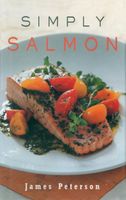Label
All
0
Clear all filters
🔥 Try our grilling cookbooks and save 25% on ckbk membership with code BBQ25 🔥
Introduction
Appears in
Published 2001
During the early 1980s, I owned a small French restaurant in Manhattan. In those days, it wasn’t so easy to find the luxurious foods we encounter today, and certain fish were especially hard to find and exorbitantly expensive. As hard as it is to imagine now, salmon was such a fish—it was virtually all wild, caught in Alaska or the West Coast, and little of it made it to the East Coast. My urban fish hunting was made no easier by the business hours at the Fulton Fish Market where wholesale fish were sold—from 3 to 7 A.M. Since I had to get up early to get to the restaurant and staying up to 3 A.M. to hit the fish market wasn’t an option, I had the brilliant idea of calling a wholesale fish dealer and have him pick me out a salmon and save it so I could come by and pick it up later in the day. (Since I shopped by taxi—a system that helped lead to the restaurant’s eventual demise—my typical day started out with an irate cab driver yelling about my fish smelling up his cab or the freshly killed ducks leaking blood on the floor.) When I arrived at the fish store—it didn’t occur to me to have it delivered—I beheld my salmon: it was covered with a thick layer of white slime (the fish guy tried to convince me this was a sign of freshness), its eyes looked in need of serious cataract surgery, and its aroma was, well, fishy. Very fishy.
Become a Premium Member to access this page
Unlimited, ad-free access to hundreds of the world’s best cookbooks
Over 160,000 recipes with thousands more added every month
Recommended by leading chefs and food writers
Powerful search filters to match your tastes
Create collections and add reviews or private notes to any recipe
Swipe to browse each cookbook from cover-to-cover
Manage your subscription via the My Membership page
Best value
Advertisement
Advertisement
The licensor does not allow printing of this title


